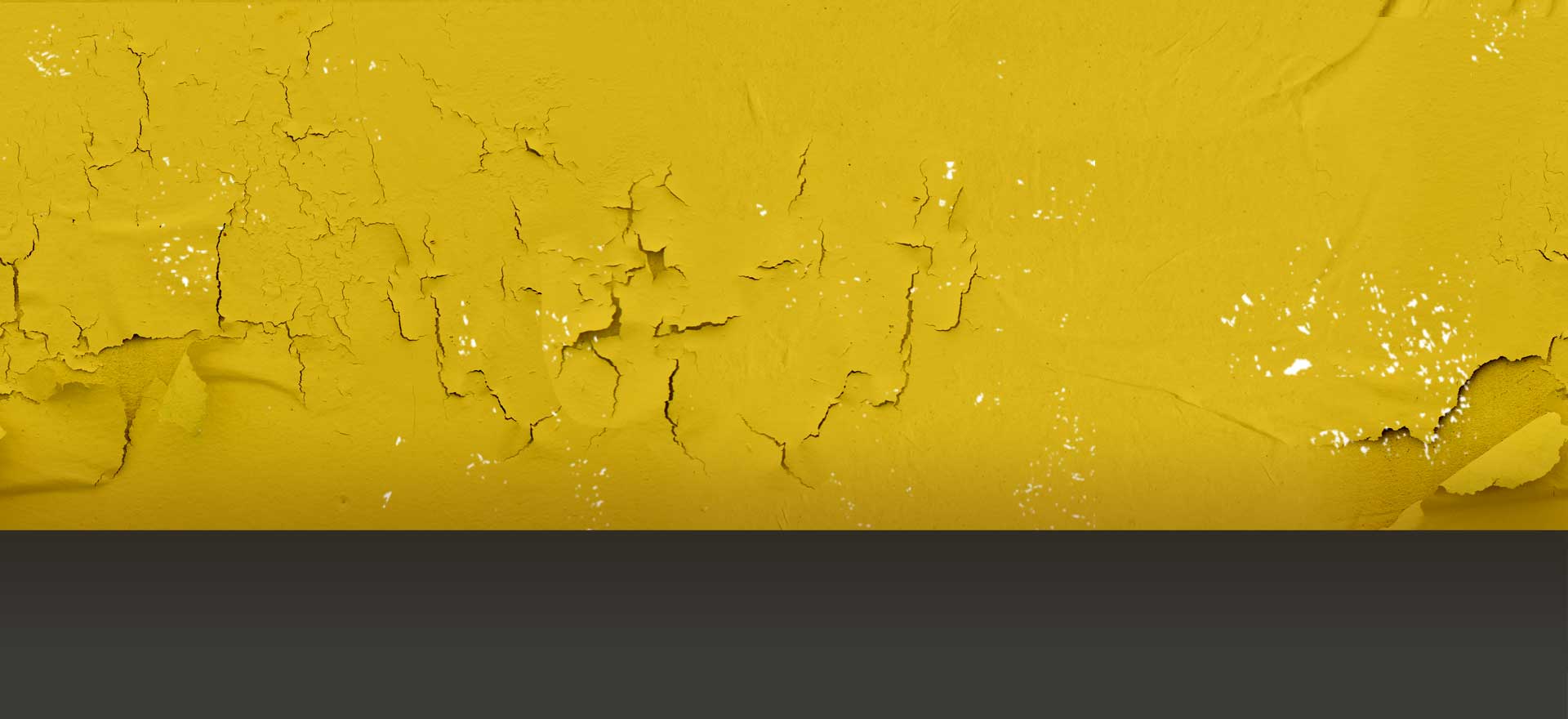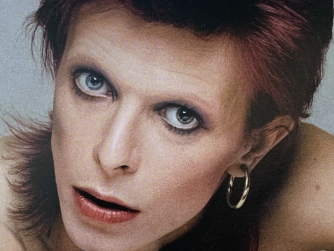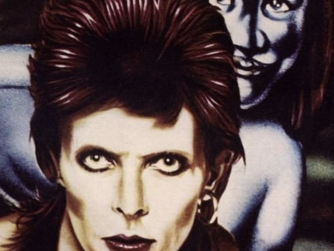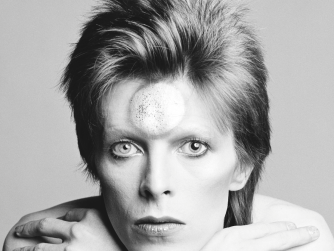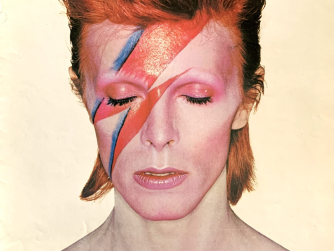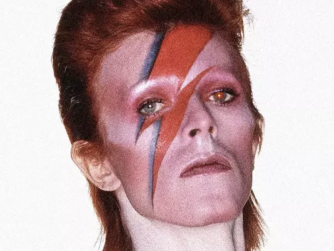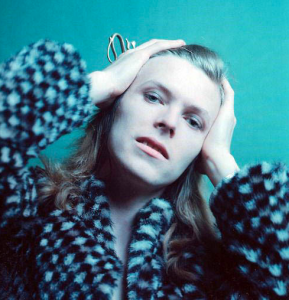
More on the 50th Anniversary of Hunky Dory
“Dedicated to the memory of Mick Rock (1948 – 2021) A rockstar photographer and a good friend of mine. Mick was the first photographer that David told me ‘captured the Bowie that David saw’. As a result I made a unique arrangement with Mick that gave him exclusive access to Bowie and my other MainMan artists” – Tony Defries

“Along with Mick this is my shoutout to some of those other photographers whose images helped capture the unique pansexual and otherworldly qualities projected by David in a series of groundbreaking recordings and album covers. Keef (Keith MacMillan) – Man Who Sold The World, Brian Ward – Hunky Dory, Ziggy Stardust, Brian Duffy – Aladdin Sane, Justin de Villeneuve – Pin Ups, Terry O’Neill & Guy Peellaert – Diamond Dogs. These six albums form the most important and transformative body of work created by David and I during the MainMan years. Alongside them were important MainMan albums that featured photography by Mick Rock – Raw Power Iggy & The Stooges,Transformer Lou Reed, All The Young Dudes Mott the Hoople” – Tony Defries
“The cover of Hunky Dory is an evocative, beautiful window into a world of wonder that completely changed my life” – Boy George
While the music on Hunky Dory was inspired by Bowie’s fascination with all things American, the cover art was an homage to the golden era of the silver screen and Bowie’s obsession with icons like Lauren Bacall, Marlene Dietrich and Greta Garbo.
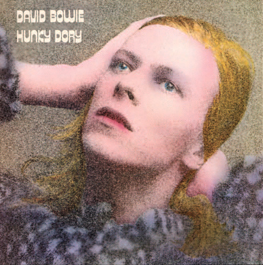
The artwork is a hand tinted photograph which was taken by Brian Ward in his studio on the first floor of 29 Heddon Street just off Regent Street in London’s West End (an address that became famous as the location for the cover of the Ziggy Stardust album taken by Brian just six months later.) Originally shot in monochrome, the Hunky Dory image was recoloured by David’s friend and collaborator George Underwood and his partner illustrator Terry Pastor who worked together at a design company called Main Artery. Terry produced the final artwork using an airbrush, transparent inks and applied the title lettering with Letraset rub-down transfer lettering widely used in the 1970s before the arrival of Adobe Photoshop!
George was a childhood friend of David’s and they formed their first band together the King Bees while attending art school. George also recorded a solo record under the name Calvin James, but decided the music business was not for him and focused on his artwork instead by working in several design studios. Due to his connections in the music business George was commissioned to design cover art for various bands like Gentle Giant, T Rex, Procol Harum and Mott the Hoople as well as his Bowie covers. The Hunky Dory cover art created by Brian, George and Terry was groundbreaking at the time because it explored the classical and romantic themes of transgender and pansexual male/female stereotypes.

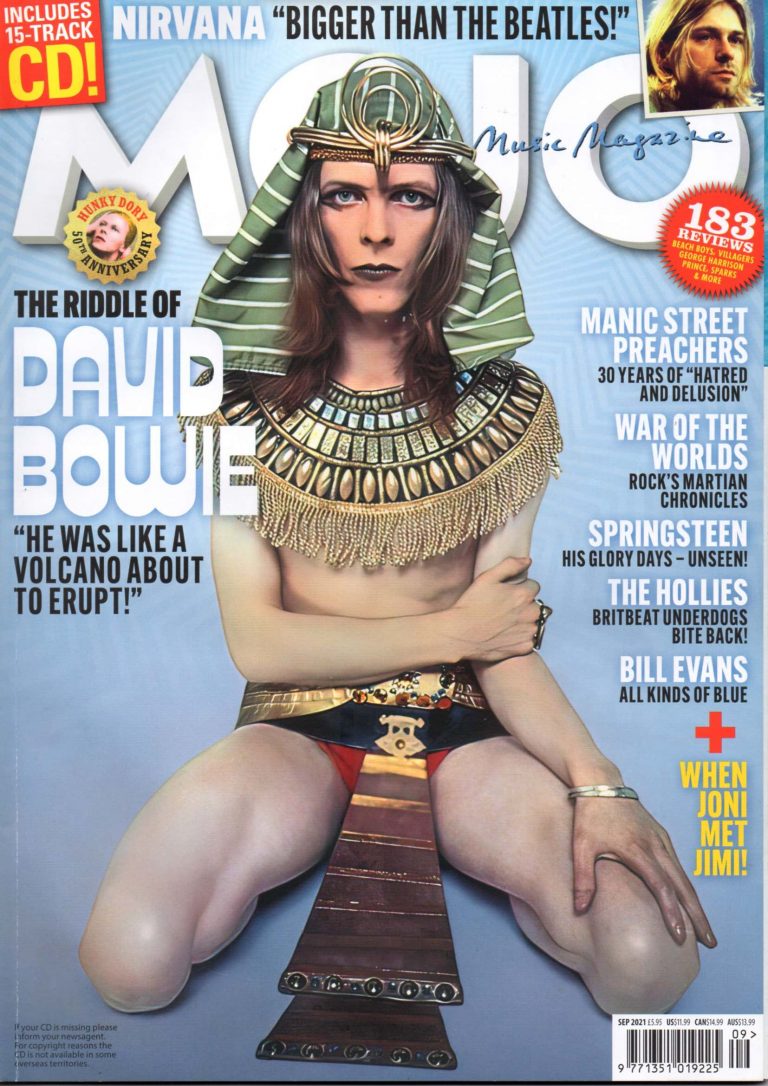
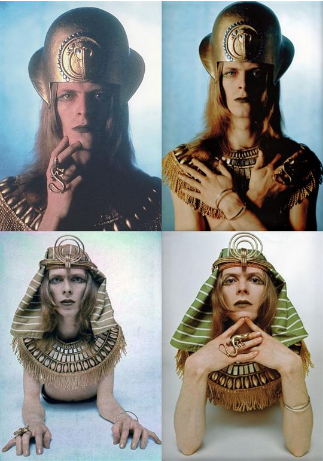
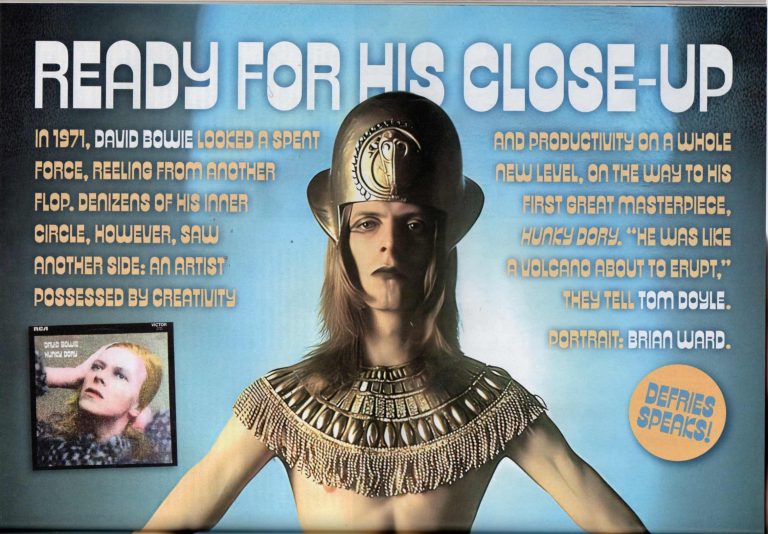
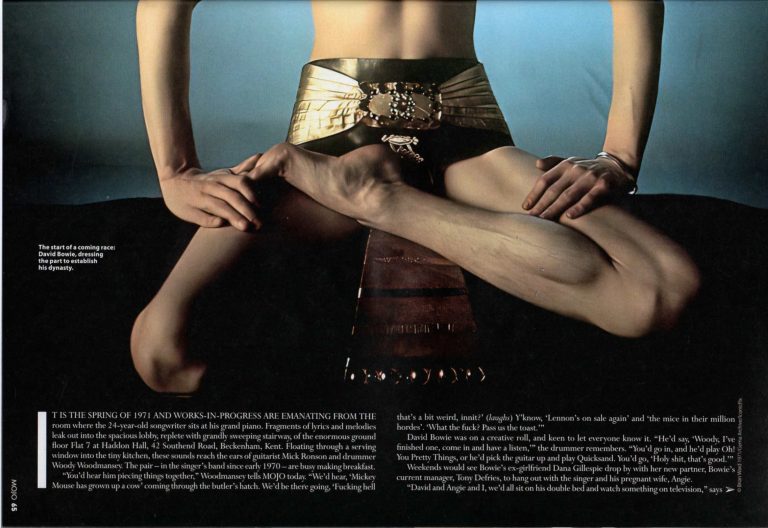
This was a concept David had addressed in his lyrics and had been experimenting with since he bought the Mr Fish dress he wore on the original UK cover of his previous album The Man Who Sold The World shot at Haddon Hall in September 1970. When he visited America early in 1971 to promote that album’s release David was photographed in this and similar men’s dresses and the US music media focused on his deliberate blurring of gender identities. Seeing how much attention it created David wanted to extend the theme in a more concentrated fashion for the Hunky Dory session with Brian Ward. At the session Brian suggested and photographed an alternative cover idea of dressing David in an outrageous Tutankhamun outfit to take advantage of the fascination then surrounding the teenage Egyptian pharaoh in the UK. Following a successful US tour of Tutankhamun artefacts the British Museum had signed a deal with the Egyptian government in July ’71 for an exhibition to be staged in the UK the following summer. Brian proposed exploiting the media attention but after viewing the final photographs, recently published in the September 2021 edition of Mojo Music Magazine, it was decided not to use them for the cover or any other purpose at the time.
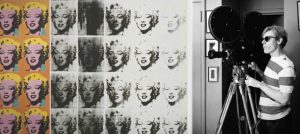
The Hunky Dory approach was inspired by Andy Warhol’s famous portrait series that used a silkscreen printing technique of colourising original photographs while manipulating them in a selection of materials and formats. David was deeply influenced by these portraits and took a book of them that included Marlene Dietrich with him to the Brian Ward session together with several photographs of Lauren Bacall and Greta Garbo. All of these served as inspirations for the final cover art. When promoting the album the cover was treated as a work of art and while David’s name and the album titled were printed on the cover in the UK, the album was released in the US without any lettering and framed in a black border highlighting the beauty of the photograph so that reviewers and fans could treat the cover as a collectible piece of art. The album was shrink wrapped in plastic with the title and David’s name placed on a removable sticker. In the UK the cover was laminated to provide a high gloss effect that further enhanced the quality of the image by creating a superior finish.
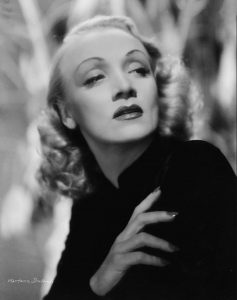
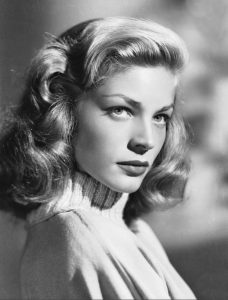
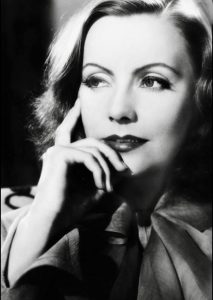
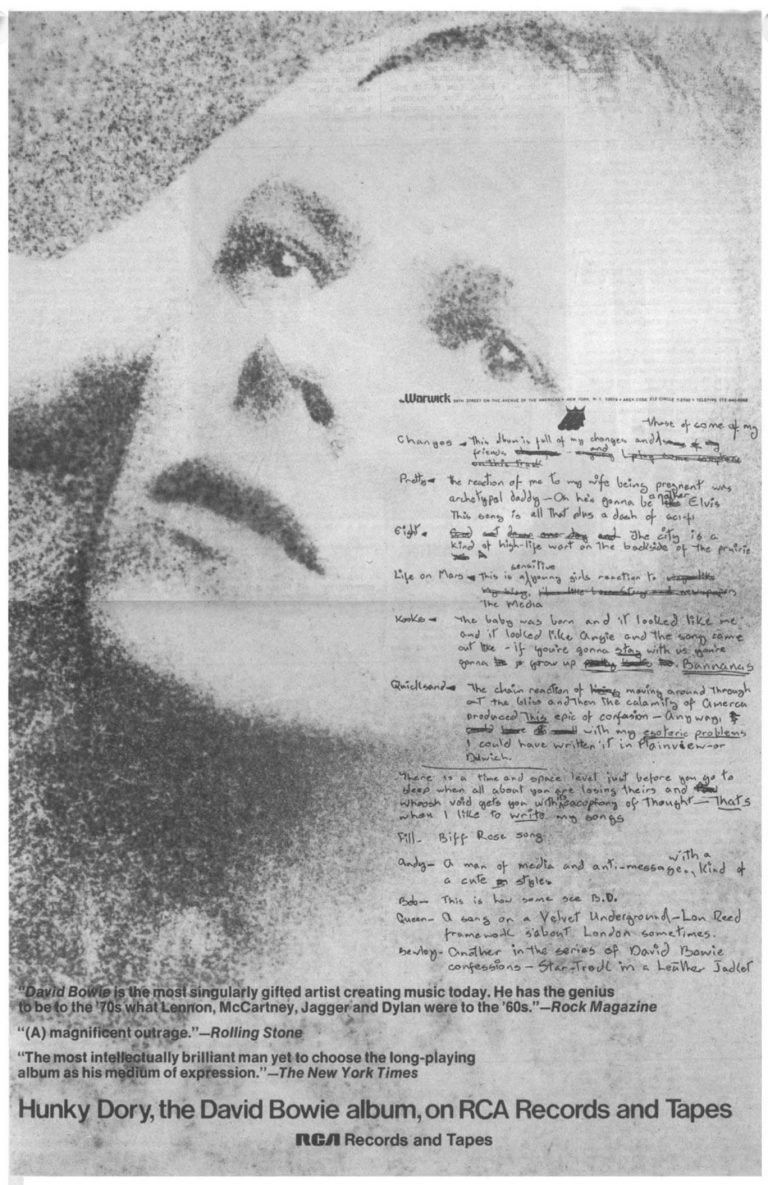
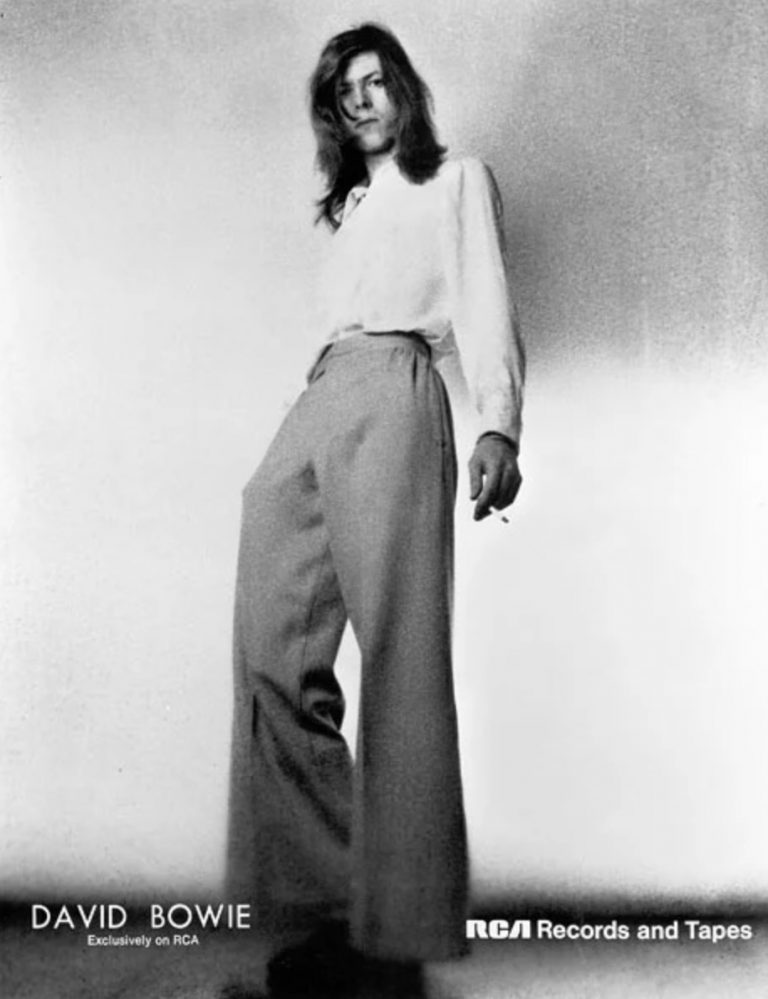
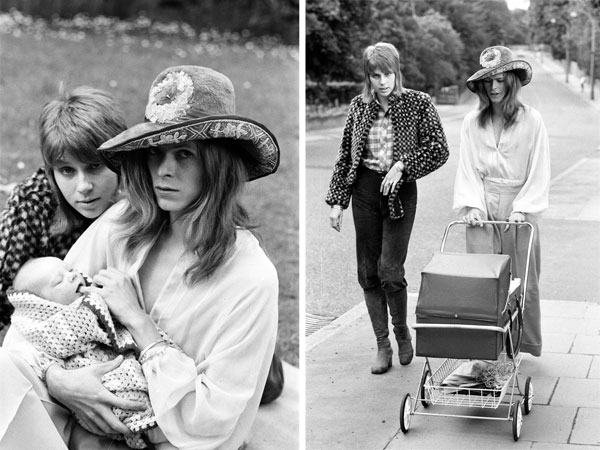
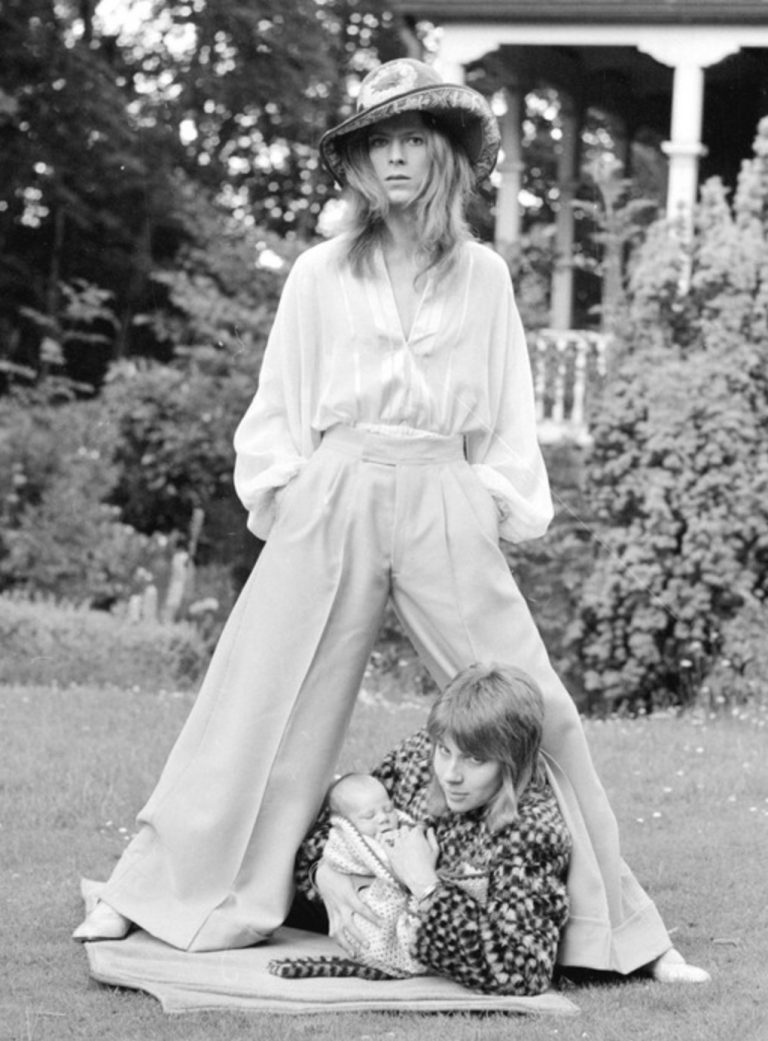

Given the sexual ambiguity the cover presented an exotic mystery wrapped up in an enigma that generated a lot of media attention and during the promotional campaign for Hunky Dory in early January 1972 when David told Melody Maker journalist Michael Watts “I’m gay and always have been, even when I was David Jones.” generated national and international press, prompting transgender discussions and debates exactly as David and Tony had planned. As part of their marketing campaign RCA placed full page ads in the music press that featured the album cover overlaid with notes about each song David had written on note paper from the Warwick Hotel in New York. The back cover featured a photograph of David wearing a pair of Oxford bags, which he had also been photographed in with Angie for several tabloid photographs in the months leading up to the release of the album and he also wore them to Glastonbury in June and to meet Andy Warhol in September. David later described this as his “Evelyn Waugh, Oxbridge look”. The jacket he is wearing in the cover photograph was also an old favourite which he wore for several photo sessions earlier that year – seen here with Dana Gillespie in May while Angie is wearing the jacket in these photographs taken for the Daily Mirror in June.
Although several people in the RCA executive management liked the music, and were impressed by the cover they also knew David was preparing an image change to embrace the new music he was recording for Ziggy Stardust when Hunky Dory was released. As a result there were both internal and external disagreements over how much money should be spent in promoting the album. Geoff Hannington, who was the RCA Marketing Manager at the time, recalled in a 1986 interview: “We soon knew we were in a situation where the artist was going to change like a chameleon from time to time, so didn’t want to spend too much money promoting an image that would soon be outdated”. With a lack of serious promotion the album sold less than 5,000 copies in the first quarter and failed to chart. Following the success of the next six albums Hunky Dory went on to sell millions of copies and to chart worldwide.
Ziggy sessions began in early November during which Trevor Bolder, who had once worked as a hairdresser, trimmed David’s hair to what would soon become the famous Ziggy style.
So Christmas 2021 is over and we wish you all a Happy New Year for 2022.

